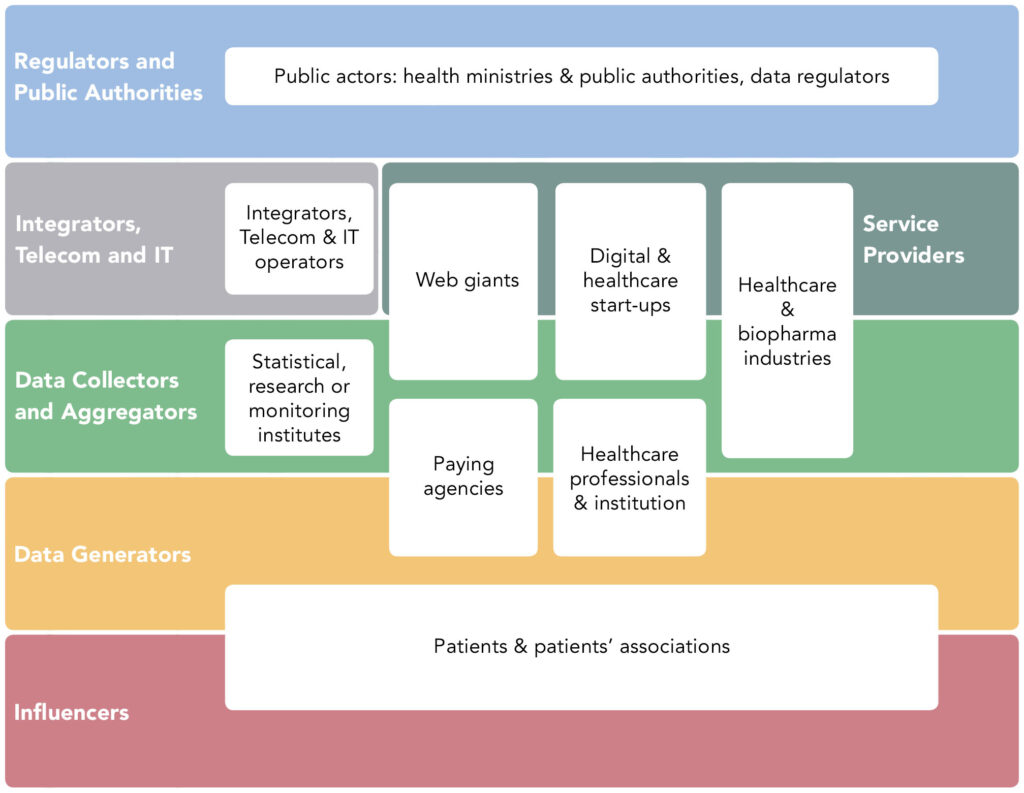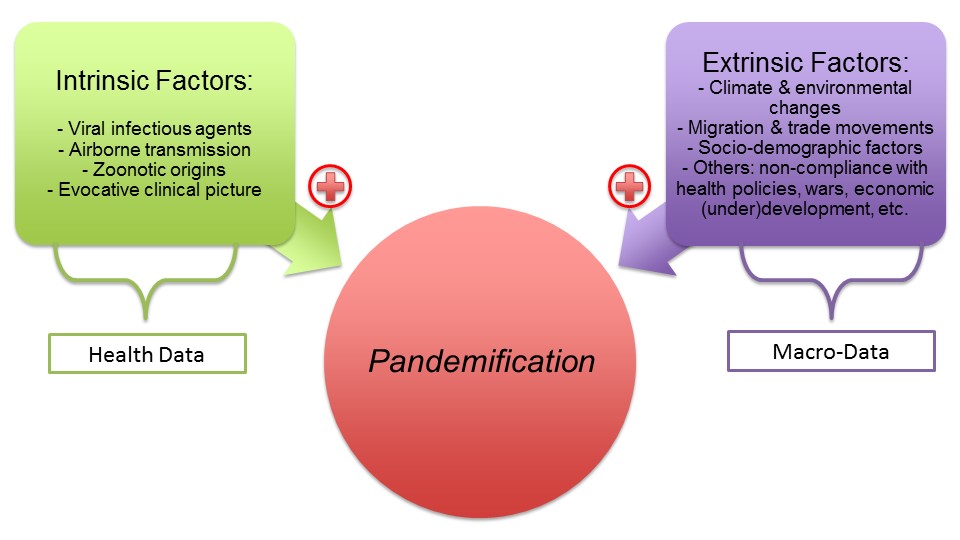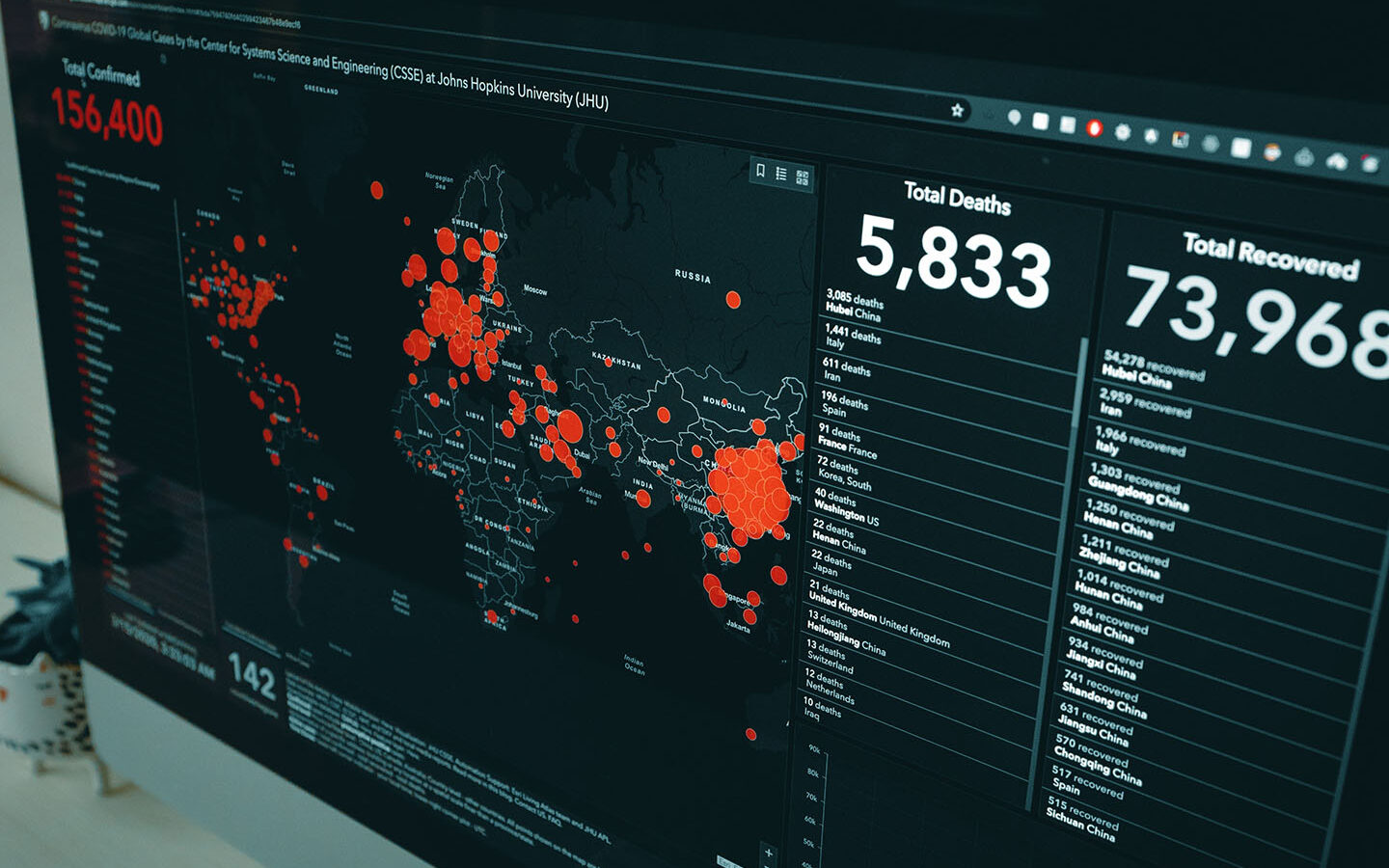The history of humanity is so closely linked to that of infectious diseases and epidemics that it is possible to analyze the dynamics and explain the nature of humankind through the spectrum of pandemics.
Ever since our species began to lead more sedentary lives, major epidemics have been the main cause of mortality and the most important stabilizer of population levels on a global scale.
This fact remains true despite major developments in modern medicine and improved health systems worldwide: infectious diseases remain almost as devastating today as they were in the past and the current COVID-19 crisis offers another recent demonstration of this.
The real danger of an infectious disease lies, among other things, in its degree of contagiousness – that is, its capacity to become an epidemic or even a pandemic.
With the massive collection of health data made possible in both structured and unstructured forms, it is now possible to accumulate a quantity of information about the health status of populations that allows new methods of effective analysis and interpretation.
As shown in figure 1 below, governments, public health authorities, medical and hospital staff, community doctors and pharmacists would benefit from a fine-tuned and predictive modelling of all the parameters to enable an efficient process to be put in place using big data.

Source: https://www.lir.asso.fr/wp-content/uploads/2019/04/Synthese-Healthcare-Data-Summit.pdf
But beyond this chain of health data, more general data – population movements, global tourism, trade and the organization of international logistics, environmental and climatic changes, and socio-demographic data in particular – can also be used to better understand the mechanisms at work in the transformation of an infectious disease into a pandemic [1].
In other words, and as clearly emphasized in figure 2 below, big data could make it possible to identify the emergence of a new disease and predict its capacity to become a pandemic, through the joint work of health professionals and data analysts, combined with the expertise of other professions (sociologists, health economists, climatologists, geo-politicians in particular), paving the way for a powerful combination of intrinsic health data and more general extrinsic macro-data.

Source: Djalil S. Ghanem (2020), Big Data and Pandemic Crisis Management, MsM – ESCP, December, page 145.
The pandemification process – a complex and multifaceted phenomenon
The pandemic process of an infectious disease depends on several factors. One of the most important of these is the emerging nature of the infectious disease, itself defined by the novelty that gives it a shock effect, combined with a lack of preparation on the part of the human race and world leaders, due to a lack of knowledge and immobility in the face of the magnitude of the measures required to deal with it.
In addition, there are many other factors that we have grouped into two blocks, factors intrinsically linked to the disease, i.e. inherent to the very nature of the infectious pathology, and factors extrinsic to the disease, independent of the disease itself but allowing its development and/or propagation (see figure 2 above).
According to several sources [2], careful observation of the major pandemics in human history systematically combine four intrinsic factors:
1. The viral nature of the pathogen causing the infection.
One of the reasons viruses have a greater predisposition to be contagious is their rate of contagiousness. The higher it is, the greater the potential for contamination of the disease it causes. Of the 19 pathogens with the highest contagiousness indices in 2020, 15 are of viral origin. If we consider the top 10 pathogens with the highest indices, only two are of non-viral origin: plague and cholera.
2. The airborne transmission of the pathogen.
The mode of transmission of an infectious disease strongly influences its reproduction rate (R0), and therefore its contagiousness. Sexual, water or air transmission are the three main modes of transmission of infectious agents. Airborne transmission is defined as being aerial, direct (postilions, secretions, etc.), indirect via contaminated surfaces (saliva, coughs, sneezes, etc.), or even carried by dust, aerosols, ventilation, air conditioning, etc.
A cross-check of the many studies of each infectious pathology shows a clear link between airborne transmission and high contagiousness. Using data presented by Statista Research Institute, 7 of the 10 diseases with the highest contagiousness indices have air transmission.
3. Zoonotic origin of the infectious agent.
Anthropozoonosis is defined by the World Health Organization (WHO) as a group of infectious diseases that are transmitted naturally from animals to humans. It is considered that 70% of infectious diseases that have appeared in recent decades are of animal origin. In addition to the many avian and swine flu or even rabies that comes from the bite of canines, the case of the COVID-19 crisis, initially doubting an animal origin – pangolin, bat, etc. – appeared in the Huanan Seafood Wholesale Market in Wuhan, China.
4. Common infectious symptoms.
It seems very important to follow the different clinical pictures of infectious diseases before their epidemic or even pandemic stage, and then to compare them in order to identify similar symptoms and to draw up a common symptomatological panorama.
Such an approach is essential in the detection of an emerging infectious disease with high epidemic potential, and on a larger pandemic scale because it makes it possible to detect its inaugural signs. The intersection of the signs of the most contagious pathologies – rubella, plague, smallpox, cholera, influenza, SARS, Ebola, COVID-19, chickenpox, mumps and measles – revealed a common clinical, flu-like picture, sufficiently contagious to transform in a pandemic, with a lethality index allowing it to spread before the death of its carriers.
All of these intrinsic factors can now be collected as health data without too much difficulty – medical reports and examinations, microbiological laboratory analyses, veterinary examinations, paraclinical examinations for the most part.
Extrinsic factors, on the other hand, include non-medical variables but whose impact on the pandemic process, in a more or less direct way, is quite notable:
- Ecological and climatic changes and the intensive exploitation of arable land;
- Population movements, global leisure and business tourism, freight transport and migratory movements;
- Socio-demographic factors such as population density, poverty, hygiene and nutrition;
- Insufficient or misapplied public health measures.
Like the former, these extrinsic factors are now readily available in structured or unstructured data form. And even though these data are not indeed health data in a strict sense, they are nonetheless essential to the analysis and characterization of an infectious disease.
Although they may appear marginal or collateral at first, each of them is instrumental since they are directly linked to factors favoring the emergence and spread of infectious diseases and, ultimately, pandemic development.
Pandemic surveillance and alerts, essential prerequisites for the survival of humanity
Our analysis leads to an unequivocal conclusion: in order to understand the pandemic process in an effective and proactive manner, with a view to blocking it as soon as possible, it will become imperative to adopt an interdisciplinary analytical approach based on the sharing of abundant, heterogeneous data, a combination of intrinsic and extrinsic factors, which will enable the operators concerned to set up a more effective system of monitoring and alerting to epidemiological phenomena on a global scale.
Without this reliable monitoring and warning system, and given the foreseeable worsening of a number of factors – particularly extrinsic ones – humanity as a whole will soon have to fight pandemic crises that are both more frequent and significantly more acute.
Health issues aside, the resulting disorders will each time threaten the planetary balance and even the eventual survival of the entire humankind.
And as is often the case, it is a question of the ability to pool skills and talents, promoting interdisciplinarity methodologies in the form of collaborative projects as much as algorithms, artificial intelligence, big data or mathematical modelling.
*This short article is taken from Djalil S. Ghanem’s (2020), “Big Data and Pandemic Crisis Management”, professional thesis, Specialised Master in Biopharmaceutical Management – ESCP (MsM) (under the supervision of Professor Frédéric Jallat) for which Dr. Ghanem was awarded the prize for the best MsM thesis in 2020.
[1]We used the neologism pandemification to describe this phenomenon.
[2]Morens DM, Folkers GK, Fauci AS. What Is a Pandemic? J Infect Dis. 1 oct 2009.
Institute of Medicine (US) Committee on Emerging Microbial Threats to Health in the 21st Century. Microbial Threats to Health: Emergence, Detection, and Response [Internet]. Smolinski MS, Hamburg MA, Lederberg J, ed. Washington (DC): National Academies Press (US), 2003.
License and Republishing
The Choice - Republishing rules
We publish under a Creative Commons license with the following characteristics Attribution/Sharealike.
- You may not make any changes to the articles published on our site, except for dates, locations (according to the news, if necessary), and your editorial policy. The content must be reproduced and represented by the licensee as published by The Choice, without any cuts, additions, insertions, reductions, alterations or any other modifications.If changes are planned in the text, they must be made in agreement with the author before publication.
- Please make sure to cite the authors of the articles, ideally at the beginning of your republication.
- It is mandatory to cite The Choice and include a link to its homepage or the URL of thearticle. Insertion of The Choice’s logo is highly recommended.
- The sale of our articles in a separate way, in their entirety or in extracts, is not allowed , but you can publish them on pages including advertisements.
- Please request permission before republishing any of the images or pictures contained in our articles. Some of them are not available for republishing without authorization and payment. Please check the terms available in the image caption. However, it is possible to remove images or pictures used by The Choice or replace them with your own.
- Systematic and/or complete republication of the articles and content available on The Choice is prohibited.
- Republishing The Choice articles on a site whose access is entirely available by payment or by subscription is prohibited.
- For websites where access to digital content is restricted by a paywall, republication of The Choice articles, in their entirety, must be on the open access portion of those sites.
- The Choice reserves the right to enter into separate written agreements for the republication of its articles, under the non-exclusive Creative Commons licenses and with the permission of the authors. Please contact The Choice if you are interested at contact@the-choice.org.
Individual cases
Extracts: It is recommended that after republishing the first few lines or a paragraph of an article, you indicate "The entire article is available on ESCP’s media, The Choice" with a link to the article.
Citations: Citations of articles written by authors from The Choice should include a link to the URL of the authors’ article.
Translations: Translations may be considered modifications under The Choice's Creative Commons license, therefore these are not permitted without the approval of the article's author.
Modifications: Modifications are not permitted under the Creative Commons license of The Choice. However, authors may be contacted for authorization, prior to any publication, where a modification is planned. Without express consent, The Choice is not bound by any changes made to its content when republished.
Authorized connections / copyright assignment forms: Their use is not necessary as long as the republishing rules of this article are respected.
Print: The Choice articles can be republished according to the rules mentioned above, without the need to include the view counter and links in a printed version.
If you choose this option, please send an image of the republished article to The Choice team so that the author can review it.
Podcasts and videos: Videos and podcasts whose copyrights belong to The Choice are also under a Creative Commons license. Therefore, the same republishing rules apply to them.





